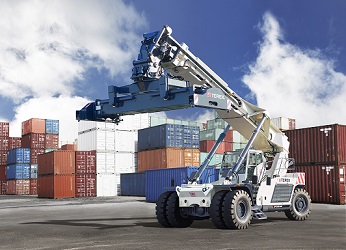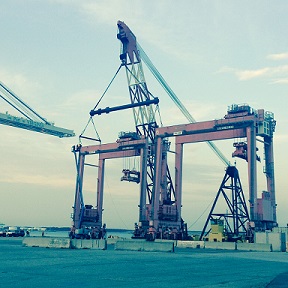Longstanding partners, the Port of Montreal and Termont Terminal Inc. signed a long-term lease on March 19, under which the private company Termont Montréal Inc. will invest $42 million in the initial phase of the terminal project. If container growth continues, Termont Montréal Inc. will invest an additional $30 million towards the project’s second phase.
This agreement was announced by the Montreal Port Authority’s President and CEO, Sylvie Vachon, in a speech to the Board of Trade of Metropolitan Montreal. “I am very pleased by this agreement, which is synonymous with economic growth,” stated Ms. Vachon, “And in turn, it shows that Termont has great confidence in the Port of Montreal. I’m sure this project will be very successful!”
Construction of the new terminal will get underway this summer, and is scheduled to open in the fall of 2016. When fully operational, the new Viau terminal will generate 2,500 direct and indirect jobs, along with $340 million in economic benefits. Its handling capacity will be 600,000 TEUs (20-foot equivalent units), bringing the Port of Montreal’s total container-handling capacity to 2.1 million TEUs.
This project is one of three components of an extensive project to improve the Port of Montreal’s infrastructure. It has received a $43.7 million subsidy from the federal government through the National Infrastructure Component of the New Building Canada Fund. Together, the MPA and the federal government will inject $83 million into the new Viau terminal project.
Termont Terminal Inc. is a longstanding partner of the Port of Montreal, as it has been operating the Maisonneuve container terminal since 1987. Mediterranean Shipping Company (MSC) will be a major partner of Termont in the Viau terminal project.
“The Port of Montreal is a strategic gateway for container shipping in North America. The development of this new capacity is not only good for Termont, MSC, and the Port, but also for Montreal, Quebec, and Canada. With its intermodal networks, Montreal is a key
facilitator for international trade,” said Madeleine Paquin, Chair of Termont Terminal Inc., President of Termont Montréal Inc., and President and CEO of Logistec Corporation. “The new Viau Terminal will provide Termont with the additional space it needs to deliver quick turnaround times and efficient cargo handling services to the Port of Montreal’s current and future customers, and thus support MSC as it continues to grow its services through the Port of Montreal.” “MSC’s commitment to the Canadian market along with the strategic growth plans of customers is at core of all of our decisions”, said Mr. Sokat Shaikh, Managing director for MSC Canada. “The continued expansion of our Canadian services, hand in hand with the expansion of our global network is literally second to none. We have learnt from our customers growing needs, that our supply chain network must have stability through land based infrastructure investments. The expansion of Termont (Viau) terminal will further reinforce MSC’s commitment to Canada, and serve our partners in business for years to come. We are simply proud to be a part of Canada’s future.”
1st row (from left to right): Sylvie Vachon, President and CEO, MPA ; Madeleine Paquin, President of the Board, Terminal Termont Inc., President of Termont Montréal Inc., and President and CEO, Logistec Corporation ; Patrick Burgoyne, President and CEO, Ceres Terminals Inc.
2nd row (from letf to right): Marie-Claude Leroux, VP, Corporate Affairs and Secretary, MPA ; Mario Blanchet, Executive VP, Operations, Logistec Corporation




